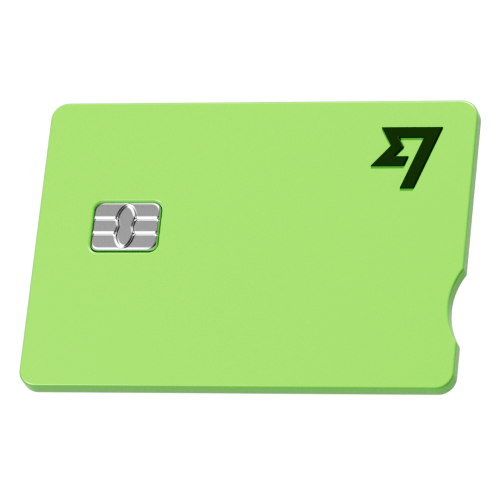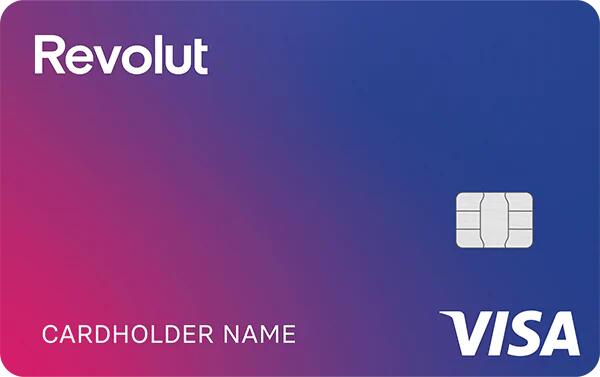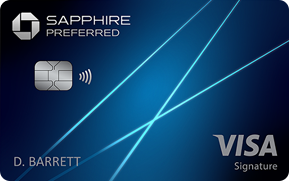Foreign transaction fee: What is it and how to avoid [2026]
A foreign transaction fee is a percentage charge added to your bill every time you spend in a foreign currency. That might be when you travel, or when you’re shopping online with retailers that are based overseas. US foreign transaction fees can be as much as 3%, adding to the costs of spending in foreign currencies and making overseas trips more expensive. So, how can you avoid paying an international transaction fee?
This guide walks through what your options are to limit or avoid international card transaction fees. Plus to help you cut the costs of spending in foreign currencies, we’ll introduce some debit and credit cards that do not have foreign transaction fees such as international debit cards from Wise and Revolut, and credit cards like the Capital One Venture Rewards.
Quick summary: International transaction fees
- Foreign transaction fees apply when you pay in a foreign currency with a credit or debit card – they’re usually around 3% of the transaction value
- You may pay International transaction fees when you travel, and when you shop online with overseas merchants – it’s not always easy to see online if the merchant will bill in a foreign currency
- Some US banks and card issuers have debit and credit cards which waive foreign transaction fees
- Foreign transaction fees may apply in addition to other costs associated with using your card abroad, such as currency conversion fees and costs which are built into the exchange rate applied
- International debit cards from Wise and Revolut offer low conversion fees with mid-market exchange rates, and can be good options to avoid high foreign transaction fees.
What is a foreign transaction fee?
A foreign transaction fee is a charge added by a bank or card issuer when you make a payment or withdrawal with a credit or debit card in a foreign currency. It’s usually a percentage cost, which is then either added to your credit card bill, or to the amount to be debited from your account if you’re using a debit card for your payment.
How foreign transaction fees work
When you spend in a foreign currency, the bank or card issuer will usually convert your spending back to USD to be billed to your account. While different cards and providers have their own processes for this, it’ll often mean your spending is converted with the network exchange rate, and a foreign transaction fee is added to the total amount spent.
It’s not always possible to see the international transaction fee as a separate line on your credit card bill or on your account statement, which may mean you’re paying this without even realizing it when you’re abroad. You may also see it as ‘intl txn fee’ for international or foreign transaction charges on your bank account.
You can find details of the foreign transaction fee that applies to your card – if there is one – in your card’s terms and conditions or fee document.
How much are foreign transaction fees?
Where banks and card issuers charge a foreign transaction fee you’ll often find that’s in the region of 3% of the transaction cost. While that sounds like a pretty small amount, it can build up very quickly. If you’re taking a trip overseas and spend 5,000 USD on your card, your international transaction fee in total will come out to 150 USD – money you could have used to do more while you’re away from home.
Some cards like the Wise Multi-Currency Card, and debit cards from Revolut, do not have foreign transaction fees. These cards are linked to multi-currency accounts you can use to hold a selection of foreign currencies.
💡 With debit cards like Wise and Revolut, if you have the currency balance you need for spending, then there’s no fee – and if you don’t you can convert the balance in your account manually or your card will do it automatically. You may need to pay currency conversion fees for this service, but this can still work out less expensive than paying a foreign transaction fee. We’ll explore this more later.
How to avoid foreign transaction fees
Let’s look at a few handy hints for avoiding foreign transaction fees when you travel and shop online.
- Choose a bank issued debit or credit card with no foreign transaction fee – there are quite a few travel credit cards which offer no foreign transaction fee, which can also have ways to earn rewards as you spend. Compare travel cards from Chase and Capital One, taking into account annual charges and other potential costs
- Use a multi-currency account for international spending – multi-currency accounts from providers like Wise and Revolut allow you to hold a balance in dozens of currencies, and spend with no extra fees if you hold the currency you need in your account
- Use cash when spending abroad – you won’t pay an international transaction fee when you use cash as you travel. However, other costs are likely to apply such as exchange rate markups and overseas ATM fees. Minimize these using a low cost debit card with a multi-currency card, like the Wise Multi-Currency Card that offers mid-market exchange rate.
Cards with no foreign transaction fees
You’ll have options for either a debit card or a credit card with no foreign transaction fee – but it’s a good idea to shop around to pick the right one for your specific needs.
Generally, credit cards can be a bit more expensive than debit cards, and can include extra costs like annual charges, interest and penalty fees. However, they’re convenient and mean you can spend now and pay later.
💡 Debit cards on the other hand require you to add money to your account in advance, before you can spend. You can often get a debit card which has no ongoing account fee to pay, including some which offer multi-currency functions which can make it easier to plan and budget for overseas spending and travel.
Here are a few of the best no foreign transaction fee cards you may want to consider:
| Provider | Foreign transaction fee | Exchange rate | Currency conversion cost | Other fees |
|---|---|---|---|---|
| Wise Multi-Currency Card | No foreign transaction fee | Mid-market exchange rate | From 0.42% | 9 USD card order fee |
| Revolut card | No foreign transaction fee | Mid-market exchange rate to plan limits | 0.5% fair usage fee for conversion once limit is exhausted 1% out of hours conversion cost | Some account tiers have ongoing fees up to 16.99 USD/month |
| Capital One cards
| No foreign transaction fee | Network rate | Costs are built into the rate applied by the network | 95 USD annual fee Interest and penalty fees can apply |
| Chase cards
| No foreign transaction fee | Network rate | Costs are built into the rate applied by the network | 95 USD annual fee Interest and penalty fees can apply |
Want to know more? Here’s a quick roundup of some key features of these cards:
Wise Multi-Currency Card: The Wise Multi-Currency Card is linked to a multi-currency account you can use to hold and exchange 40+ currencies. It’s free to spend a currency you hold in your account, and if you don’t have the currency you need, you can convert in the account or at point of payment, with no foreign transaction fees and conversion from 0.42%.
💡 Learn more on Wise Multi-Currency Card review & How to use Wise Multi-Currency Card abroad for travel.
Revolut debit card: Choose a Revolut account, including the Standard plan with no monthly fee, and get a debit card for global spending. Accounts hold 25 currencies, and all account tiers allow for some no fee weekday currency conversion within the account – fair usage fees of 0.5% apply once limits are exhausted
💡 Learn more on Revolut travel card review.
Capital One Venture Rewards credit card: For customers with an Excellent credit level, the Venture Rewards credit card from Capital One lets you spend globally with no foreign transaction fee. Other costs do apply, including an annual fee, cash advance charges and interest if you don’t repay your bill in full.
Chase Sapphire Preferred: The Chase Sapphire Preferred is a travel optimized credit card which lets you earn rewards and unlock travel and lifestyle benefits, including overseas spending with no foreign transaction fees. As with other credit cards, there’s interest to pay if you don’t clear your bill, and you’ll also have an annual fee of 95 USD
Is it better to pay in local currency or card currency?
It’s always better to pay in the local currency when you travel, and in the merchant’s local currency when you shop online. Sometimes you’ll find you’re asked by a merchant or at an ATM if you’d prefer to pay in your card currency – USD. This sounds like a tempting offer as you’d be able to see right away when your purchase is costing in dollars – but it’s actually an expensive choice.
When you pay in dollars, the merchant or ATM can set the exchange rate and fees which apply to your purchase, through something known as dynamic currency conversion (DCC). Usually this means you’ll get a worse rate than the one available from your bank or card issuer, and pay more in the end.
How do I know if my card has a foreign transaction fee?
To see if your card has a foreign transaction fee you’ll need to review the card’s terms and conditions, and fee document. These are usually available online, or in the bank’s mobile banking app. If you can’t find the detail you need it’s well worth calling the bank or popping into a branch before you start spending in foreign currencies, to avoid nasty surprises later.
We have guides for some popular US banks and their international transaction fees, check out our guides:
Chase Card Foreign Transaction Fees | American Express Foreign Transaction Fees | Discover Card Foreign Transaction Fees | Capital One Foreign Transaction Fees | Wells Fargo Card Foreign Transaction Fees
Foreign transaction fee vs currency conversion fee
We’ve mentioned that some providers like Wise and Revolut offer debit cards which are linked to multi-currency accounts. When you spend with a Wise or Revolut card there’s no foreign transaction fee, but you may find there’s a currency conversion charge to pay.
Some debit or credit cards from banks can charge both a foreign transaction fee and a currency conversion fee, which may be bundled together, so it’s worth checking your account terms and conditions carefully before you spend.
Here’s a quick overview of the 2 fee types – foreign transaction fee (also known as ‘intl txn fee’) vs currency conversion fee:
| Foreign transaction fee | Currency conversion fee |
|---|---|
| Added by bank and card issuers when spending in foreign currencies Usually a percentage fee Must be specified in your account fee schedule | May be charged by a bank, digital specialist provider or card network Can be added into the foreign transaction fee Can apply when paying in a foreign currency or converting currencies in a multi-currency account |
What is an international POS fee?
An international POS (Point of Sale) fee is a charge applied when you make a purchase with a debit or credit card outside of your the US. When you use your card to make a transaction in a foreign currency, they may charge a fee for processing that transaction.
This fee typically covers the cost of currency conversion, any associated administrative expenses and a markup on the exchange rate used for the conversion. The fee amount can vary depending on your card issuer and the terms of your card agreement. It’s important to review your cardholder agreement or contact your card issuer directly to understand the specific fees associated with international transactions to avoid surprise charges on your bank account.
What is the best way to take money abroad for travel?
If you are making travel plans, our comprehensive travel money guides can help you get started:
Conclusion: Foreign transaction fees 2026
Foreign transaction fees can apply on card spending and cash withdrawals in foreign currencies – and may push up your costs by about 3%. While that doesn’t sound like a huge amount it can quickly ramp up, so finding ways to avoid or limit this charge can be handy to keep down costs when you’re abroad.
Some US banks have debit or credit cards which do not charge international transaction fees. Or, as an alternative, you can get a multi-currency account from a digital provider like Wise or Revolut, which won’t charge foreign transaction fees and which comes with other helpful tools for managing your money internationally. Use this guide to weigh up a few different no foreign transaction card options and decide which one suits you.
International transaction fees FAQs
Does Mastercard have foreign transaction fees?
Card issuers and banks set their own foreign transaction fees, so your Mastercard debit or credit card might have a fee for overseas spending, depending on the bank’s policy. Compare a few options to find a Mastercard with no foreign transaction fee – digital providers like Wise and Revolut can be handy, with debit cards you can use all over the world with no extra international transaction charge.
Does Visa charge foreign transaction fees?
Some Visa cards have international transaction fees – whether or not your card will impose this charge will depend on the bank or provider that issued it. Read the card’s terms and conditions carefully to spot all the possible fees that might apply.
What does no foreign transaction fee mean?
If you have a no foreign transaction fee card, your overseas card spending will be converted back to USD using the network, bank or provider exchange rate, without an extra foreign transaction fee added. This doesn’t necessarily mean it’s free to spend overseas though – other costs can apply such as currency conversion fees. Choosing a low cost debit card from providers like Wise and Revolut can be a smart way to keep down your card spending fees overall.
Does no foreign transaction fees mean I’ll pay the exchange rate on Google?
If your card does not charge a foreign transaction fee your purchase or withdrawal will be converted back to USD using the network, provider or bank exchange rate. This may not be the same as the rate you find on Google. To see which rate will apply to your card, check your account agreement – some multi-currency accounts from providers like Wise and Revolut offer currency exchange with the mid-market rate, which is the one you’ll find on Google, and low or no conversion costs.






